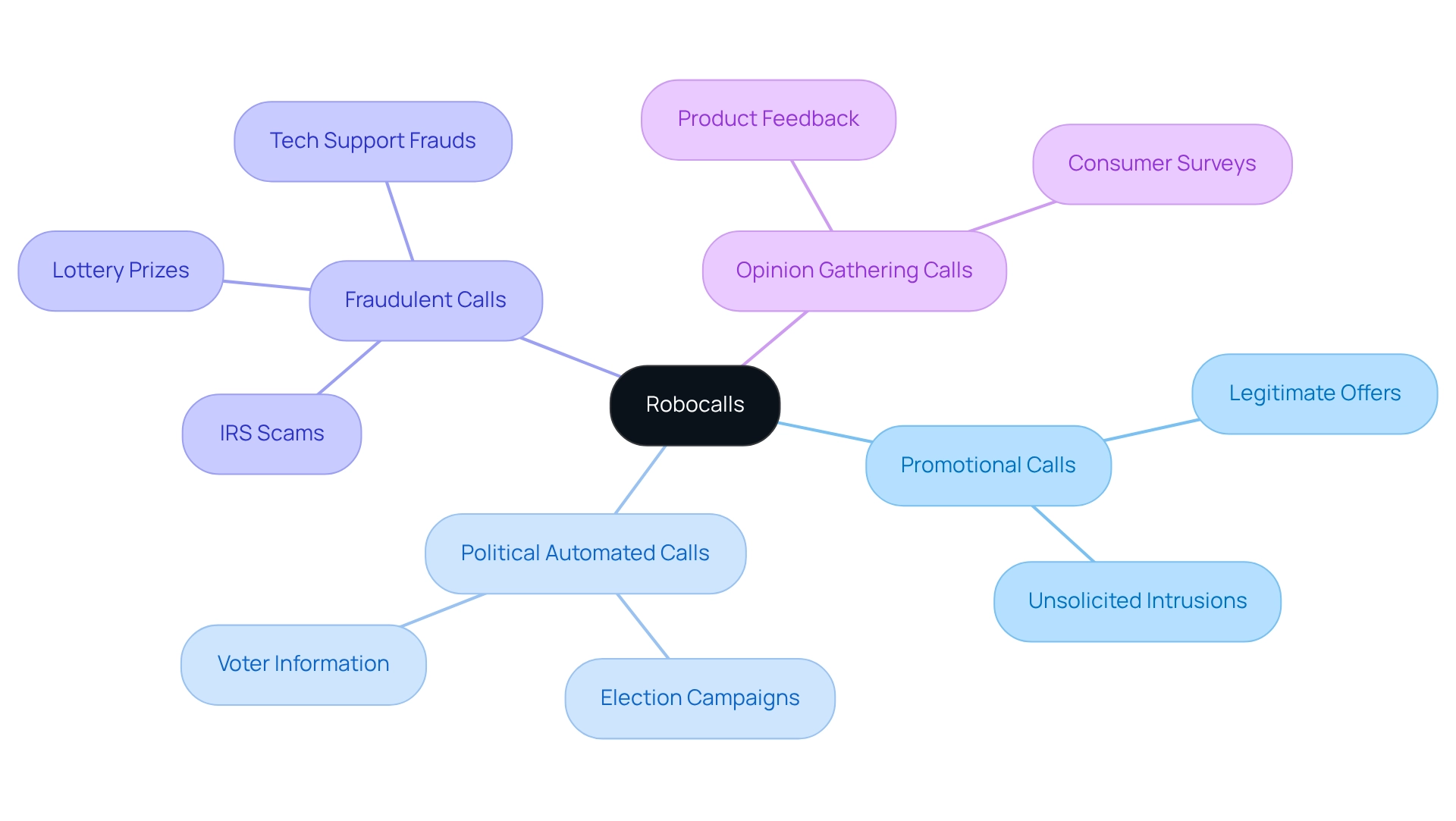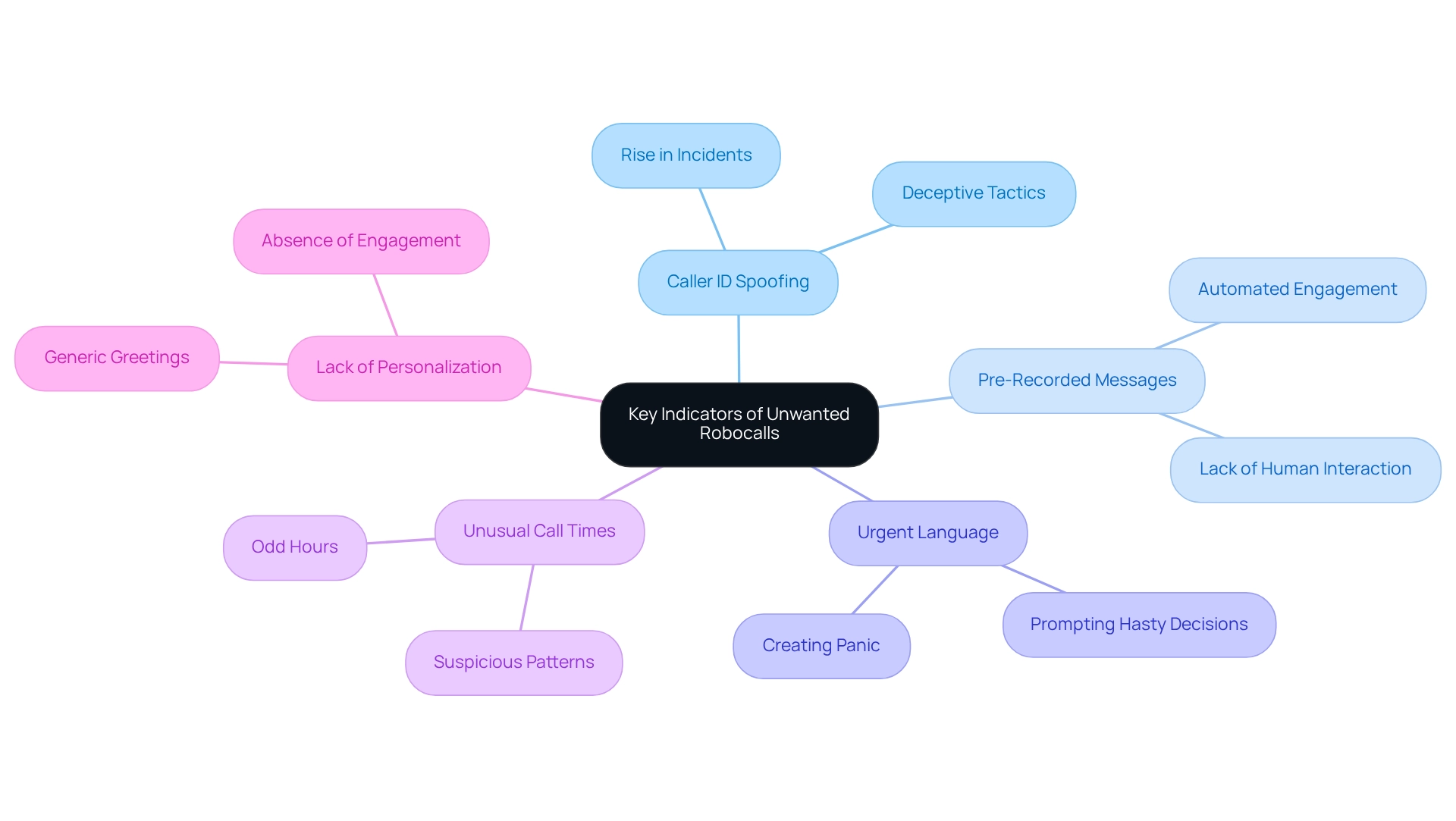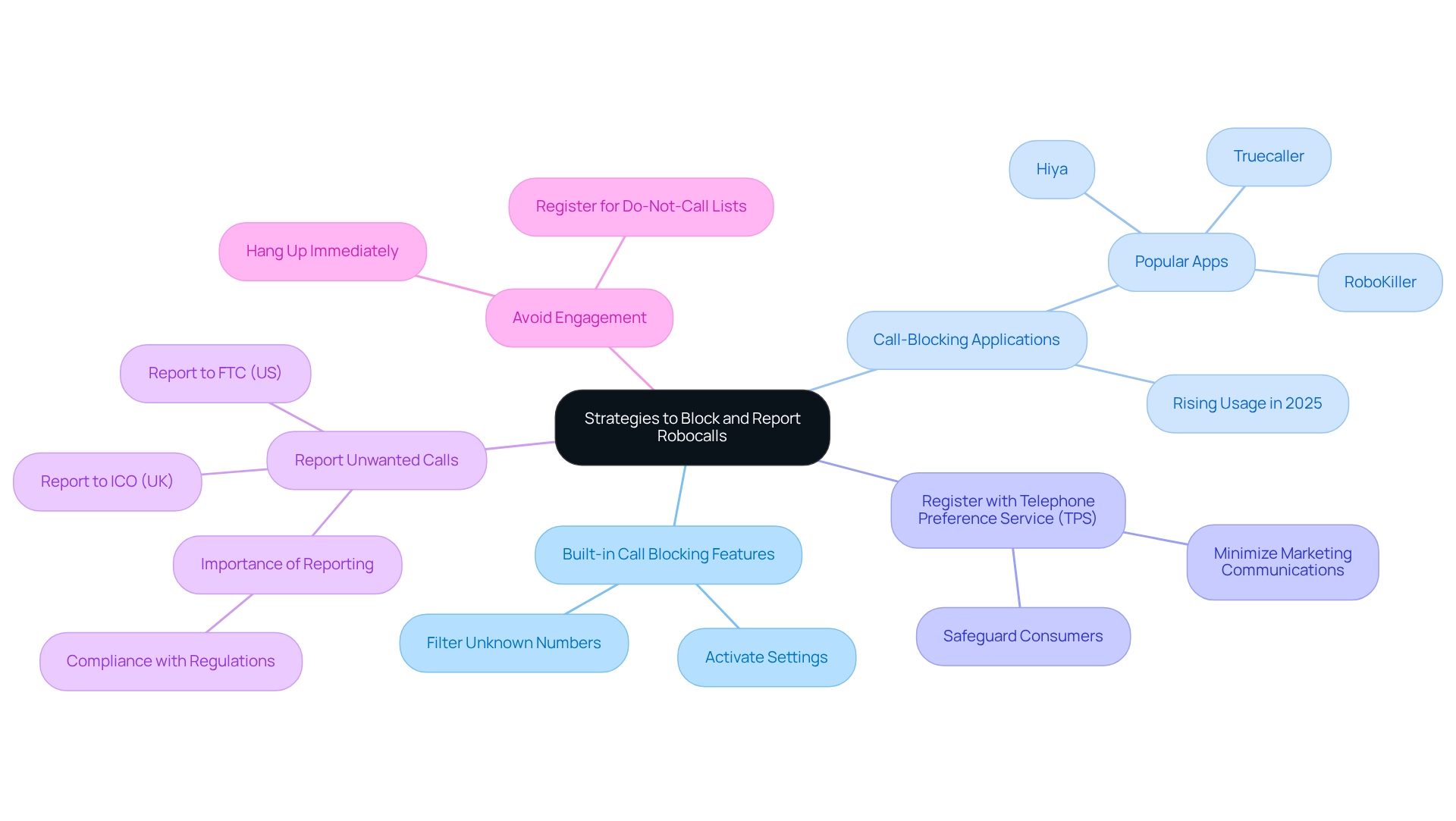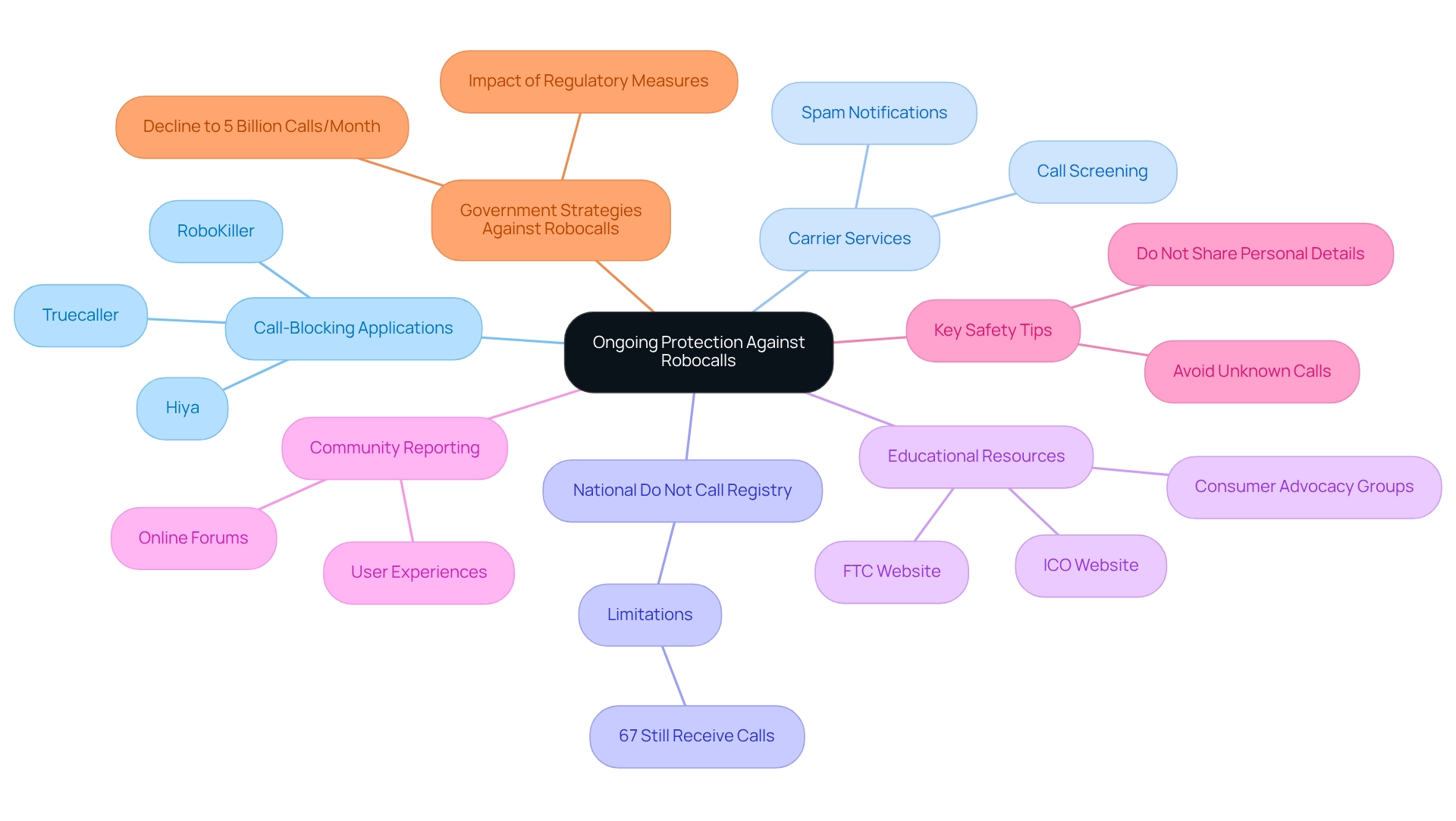
4 Steps to Identify and Block Robo Call Disruptions
GeneralKey Highlights:
- Robocalls are automated calls delivering pre-recorded messages, often generated by autodialers.
- Types of robocalls include promotional calls, political calls, fraudulent scams, and consumer opinion surveys.
- Key indicators of unwanted robocalls include caller ID spoofing, pre-recorded messages, urgent language, unusual call times, and lack of personalization.
- The STIR/SHAKEN framework aims to combat spoofed robocalls by enhancing caller ID verification.
- Strategies to block robocalls include using built-in call blocking features, installing call-blocking apps, registering with the Telephone Preference Service (TPS), reporting unwanted calls, and avoiding engagement.
- Tools for ongoing protection include call-blocking apps like RoboKiller, Truecaller, and Hiya, as well as carrier services and educational resources from authorities like the FTC and ICO.
- Community reporting and sharing experiences can help individuals avoid robocall issues and understand trends.
Introduction
In a world increasingly plagued by unwanted interruptions, robocalls have become a significant nuisance for individuals and businesses alike. These automated calls, often delivering pre-recorded messages, can range from harmless surveys to deceptive scams that prey on unsuspecting recipients.
As technology advances, so too do the tactics employed by these robocallers, making it essential for consumers to recognise the different types of robocalls and the indicators that signal their presence.
This article delves into the nature of robocalls, offers strategies for identifying and blocking them, and highlights essential tools and resources for ongoing protection. By empowering individuals to reclaim their peace of mind, we can navigate an age of relentless telemarketing and fraud.
Understand Robocalls: Definition and Types
Robocalls are automated phone calls that deliver pre-recorded messages to numerous recipients, typically generated by autodiallers capable of dialling multiple numbers simultaneously. Understanding the various types of robocalls is essential for navigating this landscape effectively:
- Robocalls are often employed by businesses to promote products or services, and they can range from legitimate offers to unsolicited intrusions.
- Political Automated Calls: Common during election campaigns, these calls inform voters about candidates or issues. While generally lawful, they may still prove bothersome.
- Robocalls are fraudulent automated calls aimed at deceiving recipients into divulging personal information or funds, often involving scams such as counterfeit IRS communications, lottery prizes, and tech support frauds.
- Robocalls, designed to gather consumer opinions about products or services, can still intrude on personal time despite appearing harmless.
Recognising these categories empowers individuals to discern the purpose behind incoming calls and take appropriate action.

Identify Unwanted Robocalls: Key Indicators
To effectively identify unwanted robocalls in 2025, it is essential to recognise the following key indicators:
- Caller ID Spoofing: Many robocalls employ technology to mask their true number, often displaying a local area code to deceive recipients into answering. This tactic has become increasingly common, with a notable rise in spoofing incidents reported this year, underscoring the urgency of identifying these communications.
- Pre-Recorded Messages: If you respond to a phone connexion and encounter a recorded message rather than a live individual, it is likely a robocall. These automated messages are designed to engage you without requiring human interaction.
- Urgent Language: Scammers frequently utilise urgent language, claiming immediate action is necessary, such as paying a fine or confirming personal information. This tactic aims to create panic and prompt hasty decisions.
- Unusual call times: Robocalls often occur at odd hours, such as late at night or early in the morning, which should raise suspicion.
- Lack of Personalisation: Legitimate calls usually address you by name, while automated calls often resort to generic greetings, indicating a lack of genuine engagement.
Furthermore, it is crucial to be aware of the STIR/SHAKEN framework, mandated by the FCC to combat spoofed robocalls, which operate exclusively on IP networks. This regulatory effort aims to enhance caller ID verification and reduce the prevalence of such scams.
By recognising these indicators, you can bolster your defences against unwanted interruptions and potential scams. As Maurie Munro, Vice President of Enterprise Sales, emphasises, “Call spoofing not only puts consumers at risk of falling victim to impersonation scams, but it also jeopardises enterprises.” Understanding these signs is vital for maintaining security and trust in communication. Moreover, case studies such as “Restoring Customer Trust Through Branded Calling” illustrate how branded calling solutions can help sustain customer engagement and protect sensitive information by assuring customers that calls are legitimate.

Implement Strategies to Block and Report Robocalls
To effectively block and report robocalls, consider the following strategies:
- Utilise Built-in Call Blocking Features: Most smartphones come equipped with features that allow users to block unknown or unwanted numbers. Ensure these settings are activated to filter out potential spam calls.
- Instal Call-Blocking Applications: Third-party apps such as Hiya, RoboKiller, and Truecaller are designed to identify and block robocalls by leveraging user feedback and extensive databases. In fact, the use of blocking applications in the UK has risen considerably in 2025, showcasing their effectiveness in handling undesired communications.
- Register with the Telephone Preference Service (TPS): In the UK, registering your number with the TPS can effectively minimise unwanted marketing communications. This service assists in safeguarding consumers from undesirable communications and is an essential measure in handling automated calls.
- Report Unwanted Calls: If you receive a robocall, it is crucial to report it to the appropriate authorities, such as the Information Commissioner’s Office (ICO) in the UK or the Federal Trade Commission (FTC) in the US. Reporting these communications assists in monitoring and fighting against unlawful robocalls. Richard Smith from the FCC emphasises that reporting is essential for compliance with robocall regulations.
- Avoid Engagement: If you inadvertently answer a robocall, hang up immediately. Interacting with the caller can result in a rise in unsolicited communications, as it shows that your number is operational. Additionally, many states have statewide do-not-call lists that residents can register for, further reducing the likelihood of receiving such calls.
By applying these strategies, you can significantly decrease the occurrence of unwanted calls and improve your overall communication experience. Insights from the case study ‘FAQs About Automated Calls’ highlight the challenges in distinguishing between legal and illegal automated calls, reinforcing the importance of these strategies.

Utilize Tools and Resources for Ongoing Protection
To ensure ongoing protection against robocalls, consider implementing the following tools and resources:
-
Call-Blocking Applications: Utilise dedicated software designed to screen and prevent unwanted communications. Notable options include:
- RoboKiller: This application employs advanced AI algorithms to effectively block spam calls and assigns a spam score to incoming calls, empowering users to make informed decisions.
- Truecaller: This tool identifies unknown callers and blocks spam based on a vast user-generated database, enhancing caller recognition and user security.
- Hiya: Offering caller identification and spam detection functionalities, Hiya enables users to manage their incoming communications more efficiently.
-
Carrier Services: Many mobile providers now offer robust services aimed at blocking unwanted calls. It is advisable to consult your provider for options such as call screening, spam notifications, and other protective measures that can significantly reduce undesired communications.
-
National Do Not Call Registry: Enrolling your number with the National Do Not Call Registry can assist in reducing telemarketing calls. However, it is crucial to note that over 67% of individuals on this registry still report receiving the same volume of robo calls as they did before. This statistic underscores the limitations of relying solely on the registry for protection.
-
Educational Resources: Stay informed about the latest robocall scams and prevention techniques by visiting authoritative websites such as the FTC and ICO, as well as consumer advocacy groups. These resources provide valuable insights into emerging threats and effective countermeasures. As highlighted by the Better Business Bureau, “To learn more about the battle against unsolicited calls, see this FTC article on such calls and read about FCC’s effort to combat these disturbances and spoofing.”
-
Community Reporting: Engage with online forums or community groups where users share their experiences and report automated calls. This collective knowledge can empower others to avoid similar issues and contribute to a broader understanding of robo call trends.
-
Key Safety Tips: To stay safe, avoid answering unknown calls and never share personal details over the phone. This simple practice can help protect against potential scams.
By utilising these tools and resources, businesses can significantly enhance their defences against unwanted calls, fostering a more secure communication environment and improving overall operational efficiency. Additionally, government strategies have led to a decline in robo calls to 5 billion a month as of 2023, suggesting that regulatory measures and technological advancements are beginning to have a positive impact on reducing these robo calls.

Conclusion
Robocalls present a significant challenge in today’s communication landscape, impacting both individuals and businesses alike. Understanding the various types of robocalls—spanning telemarketing, political outreach, and potential scams—enables recipients to identify their nature and respond effectively. Recognising key indicators such as caller ID spoofing, pre-recorded messages, and unusual call times is essential for distinguishing legitimate calls from unwelcome interruptions.
To reclaim control over personal and professional communication, implementing effective strategies to block and report robocalls is imperative. Utilising built-in call-blocking features, installing dedicated applications, and registering with national do-not-call lists are proactive measures that can substantially diminish the frequency of these intrusive calls. Furthermore, reporting unwanted calls to the appropriate authorities is crucial in addressing this escalating issue.
Leveraging tools and resources, including call-blocking apps and engaging with educational content, provides ongoing protection against robocalls. Staying informed about emerging threats and tapping into community knowledge fosters a collective defence against these disturbances. As technology and regulatory efforts continue to evolve, individuals and businesses can take meaningful steps toward safeguarding their communication channels, enhancing their peace of mind in an increasingly noisy world.
Frequently Asked Questions
What are robocalls?
Robocalls are automated phone calls that deliver pre-recorded messages to multiple recipients, typically generated by autodiallers that can dial numerous numbers simultaneously.
What are the different types of robocalls?
The main types of robocalls include promotion calls from businesses, political automated calls during election campaigns, fraudulent calls aimed at scamming recipients, and calls designed to gather consumer opinions.
How are robocalls used by businesses?
Businesses use robocalls to promote their products or services, which can range from legitimate offers to unsolicited intrusions.
What are political automated calls?
Political automated calls are common during election campaigns and inform voters about candidates or issues. While generally lawful, they can still be bothersome to recipients.
What are fraudulent robocalls?
Fraudulent robocalls are automated calls designed to deceive recipients into providing personal information or funds, often involving scams like fake IRS communications, lottery prizes, or tech support frauds.
What is the purpose of consumer opinion robocalls?
Consumer opinion robocalls are designed to gather feedback about products or services, but they can still intrude on personal time despite appearing harmless.
Why is it important to recognise the categories of robocalls?
Recognising the categories of robocalls empowers individuals to understand the purpose behind incoming calls and take appropriate action.
Enjoyed this post? Share it with your network!
10 Best AI Sales Tools to Boost Your Team’s Performance

Discover the top 10 best AI sales tools to enhance team performance and drive revenue growth.
Mastering Test Call Numbers: A Step-by-Step Guide for Sales Directors

Elevate your communication with our guide on mastering test call numbers for sales success.
7 Ways Automated Outbound Calls Boost Sales Performance

Discover how automated outbound calls enhance sales performance and streamline communication.
